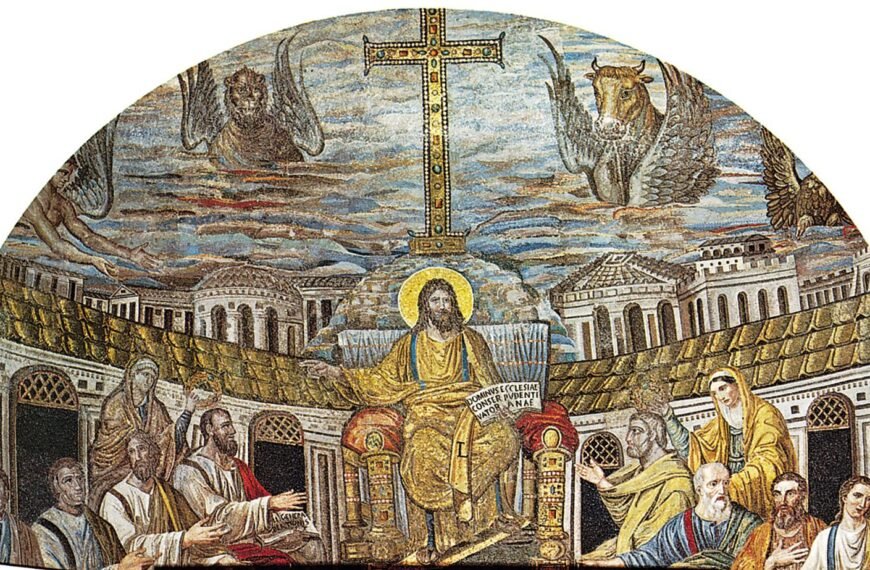What if the identity of the Morning Star in the Bible is not as straightforward as it seems? Who Is The Morning Star In The Bible?? The term “Morning Star” is deeply meaningful. It is linked to both Jesus and Lucifer. This article looks into the biblical roots and meanings of the Morning Star. It shows how its double meaning affects our view of good and evil.
We will examine scripture to uncover the deep meanings behind this symbol, revealing its importance in stories of hope and revelation in Christian theology.
The Biblical Origin of the Morning Star Concept
The term “Morning Star” is very important in the Bible. It helps us understand light and power in scripture. Its Morning Star origin comes from key parts of Isaiah and Revelation. In Isaiah 14:12, Lucifer is mentioned, showing a fallen angel. This contrasts with Revelation 22:16, where Jesus is called the Morning Star, bringing hope and divine light.
This contrast in biblical references shows a deeper story in Christian theology. It’s about the fight between light and darkness. The Morning Star becomes a key symbol in scripture. Understanding it helps us see how light is more than just physical. It’s also a spiritual symbol.
Understanding the Term “Lucifer”
The term “Lucifer” comes from the Latin Vulgate and means “light-bringer.” It is based on the Hebrew word הֵילֵל (Helel), which means brightness and illumination. This link between languages helps us understand the deep meaning behind the term. In Christian belief, Lucifer is seen as a fallen angel, showing how his brightness turned to darkness.
The Latin Translation and Its Implications
The Latin Vulgate’s use of “Lucifer” changes how we see biblical stories. It translates הֵילֵל (Helel) as “light-bringer,” bringing to mind light and its importance. This shows Lucifer was once highly respected but then fell. His link to Venus highlights his former glory, making us think about light and darkness in the Bible.
Significance of the Hebrew Word הֵילֵל (Helel)
The Hebrew word הֵילֵל (Helel) is very important in the Bible. It means “shining one,” showing Lucifer’s beauty before he fell. It also compares to figures like Jesus, highlighting the story of fallen grace and the mix of light and darkness. This mix points to themes of temptation, pride, and redemption in the Bible.
Who Is The Morning Star In The Bible?
The Morning Star is a key figure in the Bible, linked to both Jesus and Satan. It shows how light can mean hope or deception. This idea is important in understanding the Bible.

References in Isaiah and Revelation
In Isaiah 14:12, Lucifer is called the “morning star.” This shows his fall from glory to despair. It’s a key part of understanding the Morning Star in the Bible.
On the other hand, Revelation 22:16 says Jesus is “the bright Morning Star.” This shows His true nature and His promise of salvation. These verses are crucial in showing the battle between good and evil in the Bible.
Contrasting Representations of Jesus and Satan
The title Morning Star highlights the difference between Jesus and Satan. Jesus is the true Morning Star, guiding us to hope and redemption. Satan, once Lucifer, represents a false light, showing ambition and pride.
This contrast makes us think about redemption and the fall of Satan in the Bible.
The Role of Jesus as the Morning Star
In the Bible, Jesus is seen as the Morning Star. This title is very important in Christian beliefs. It means He is a guiding light, bringing hope and direction to believers. Jesus being called the Morning Star shows His divine nature and the promises He brings.
Identification in Revelation 22:16
In Revelation 22:16, Jesus is clearly named as the Morning Star. This shows His role as a guiding light for His followers. It tells us He is always leading us towards redemption.
The image of the morning star means new beginnings. It brings hope and renewal in uncertain times. This verse not only shows Jesus’ power but also His promise to light the way for believers.
Symbolism of Light and Hope
The light of the morning star symbolizes hope in Christianity. Jesus, as the Morning Star, stands for the victory of light over darkness. He gives hope to those facing life’s challenges.
His light gives believers a sense of purpose. It encourages them to trust in His guidance and the promise of eternal life.
The Former Glory of Satan as Lucifer
Satan’s story tells of a big change from being highly respected to being seen as a symbol of rebuke. He was once known as Lucifer, a powerful angel who fell because of his pride. His wish to be higher than God led to his downfall.
The Fall from Heaven in Biblical Texts
The story of Satan’s fall is told in Isaiah 14 and Ezekiel 28. These texts give us a deep look at how Lucifer, the “morning star,” lost his high status. They show how ambition and rebellion against God can lead to dire consequences.
Depictions in Ezra and Job
In Ezra and Job, we learn more about Satan’s character and his role as an enemy. Job 38:4-7 talks about the “morning stars” as angels who celebrated during creation. This links back to Lucifer’s original status before he fell. Understanding this helps us see Satan’s rebellion as unique and how divine beings work together.
Comparative Analysis: Jesus and Satan
The figures of Jesus and Satan have titles that deeply affect their stories in the Bible. These titles show how different they are in meaning and impact. Jesus is seen as the light of truth and goodness. Satan, also known as Lucifer or the light bearer, uses light to deceive. This shows the deep meaning behind each character and their roles in the Bible.
Similar Titles and Their Meanings
Jesus and Satan have titles that tell us about their nature. Jesus is called the “Morning Star,” meaning hope, guidance, and salvation. Satan is linked to light but in a deceitful way, pretending to be truthful but for evil. These titles help us see how different they are in the Bible, showing their opposite goals.
The Light-Related Metaphors
Metaphors about light help us understand Jesus and Satan better. Jesus is called the “light of the world,” meaning he brings enlightenment and clarity. This shows He guides believers through darkness. On the other hand, Satan is seen as an “angel of light” but deceives by appearing as good. These metaphors show the struggle between light and dark, good and evil. For more on this, visit this link.
The Symbolism of the Morning Star in Scripture
The morning star is more than just a star in the sky. It stands for new beginnings and spiritual renewal. In the Bible, it’s a symbol of hope, especially for salvation and resurrection. It shows transformation and divine promise to believers.
Morning Star as a Sign of New Beginnings
The morning star is linked to new starts in the Bible. It brings hope and the promise of renewal, showing light after darkness. In Christian beliefs, it reminds us of faith’s power to change lives. It stands for rebirth and the change that comes from Jesus’ teachings.
The Role of Stars and Angels in the Bible
Stars often mean angels in the Bible, showing their key role in God’s plan. In Job 38:7, “morning stars” are mentioned during creation, bringing joy and importance. Stars symbolize guidance, hope, and light from God. They show a deep connection between God’s creation and spiritual beings.
The Theological Implications of Duality
The theology of the Morning Star shows the deep struggle between good and evil in Christianity. Jesus and Satan, seen as the Morning Star and Lucifer, show this struggle. Light stands for goodness and God’s presence, while darkness means evil and temptation. This battle calls believers to deeply understand the Bible and find truth in their faith journey.
Exploring Good Versus Evil
The Morning Star symbol reminds Christians of their spiritual fight. Jesus brings hope and salvation, while Lucifer warns against pride and rebellion. This contrast makes believers think about their choices and why they make them, based on their faith.
Interpretations Across Different Denominations
Christian groups have different views on the Morning Star, based on the Bible. For some, Jesus is the ultimate light and savior, offering hope for eternal life. Others might focus on Lucifer’s fall, showing dangers of pride and leaving God. These views show how the Bible’s depth and Christian diversity lead to different beliefs on good and evil.
FAQ
Who Is The Morning Star In The Bible?
The Morning Star in the Bible can mean two things. It often points to Jesus Christ and sometimes to Lucifer. In Isaiah 14:12, it talks about Lucifer, a fallen angel. But in Revelation 22:16, it says Jesus is the true Morning Star, bringing hope and salvation.
What are the biblical origins of the Morning Star concept?
The idea of the Morning Star comes from the Bible, mainly in Isaiah 14 and Revelation 22. It has grown to be a key symbol. It links light, hope, and power in Christian texts.
What does the term “Lucifer” mean in the context of the Bible?
“Lucifer” means “light-bringer” and comes from the Latin Vulgate Bible. It’s the Hebrew word for “morning star” (הֵילֵל, Helel). This word describes a fallen angel who once brought light but now is in darkness.
How does the term הֵילֵל (Helel) relate to the Morning Star?
הֵילֵל (Helel) means “shining one” or “light-bringer.” It’s key to understanding Lucifer’s past glory in Isaiah 14:12. This word helps us see how both Jesus and Satan are linked to light in the Bible.
What contrasting representations do Jesus and Satan have as the Morning Star?
Jesus is seen as the “bright” Morning Star, symbolizing hope and salvation. Satan, as Lucifer, shows a false light of pride and ambition. This contrast makes us think deeply about both figures.
How does Revelation 22:16 identify Jesus as the Morning Star?
Revelation 22:16 says Jesus claims to be the Morning Star. This shows He guides and brings hope to believers. It contrasts with Lucifer’s fall, highlighting redemption and light.
What theological implications arise from the symbolism of the Morning Star?
The Morning Star stands for hope, renewal, and guidance. Jesus as the Morning Star shows light winning over darkness. This reinforces hope for believers on their spiritual path to eternal joy.
What do biblical accounts say about Satan’s fall from heaven?
Isaiah 14 and Ezekiel 28 tell of Satan’s fall from heaven because of pride and ambition. Once called Lucifer, his story warns us of the dangers of pride and rebellion against God.
How do the titles of Jesus and Satan share thematic resonance?
Both Jesus and Satan are called “light-bringers,” but with different meanings. Jesus is about truth and salvation, while Satan uses light for deceit. This shows their different roles in the battle between good and evil.
What role do stars and angels play in biblical metaphor?
Stars and angels in scripture often symbolize divine beings part of God’s plan. The “morning stars” in Job 38:7 show their joy during creation. This adds to the link between divine beings and light.
How do different Christian denominations interpret the Morning Star?
Christian groups have different views on the Morning Star. Some see it as Jesus’ symbol of hope. Others focus on Lucifer’s fall as a lesson against pride. These views show the depth of biblical interpretation.

Rockin’ the faith, one verse at a time!
Growing up, the Bible’s stories deeply impacted me. Now, with over 15 years of preaching experience, I blend timeless teachings with modern technology, making them relevant for today’s world.
Bible Hub Verse is my platform to share historical insights and thought-provoking articles, exploring both familiar and uncommon Christian topics. My passion is building a welcoming online space for everyone to learn, grow in their faith, and discover the Bible’s enduring message.
Join the journey!
God bless you.














